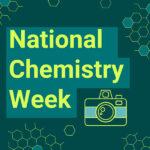
Sharing ideas and inspiration for engagement, inclusion, and excellence in STEM

When you think about tools for teaching chemistry, potato chips, grape Kool-Aid®, and Gatorade® might not be the first things that come to mind. However, these items can be integral to food chemistry experiments—which are a great way to engage high school and college students in hands-on science learning with real-world applications.
Our Food Chemistry Experiments e-book features 14 experiments that use food as a means to explore important scientific concepts, such as stoichiometry, acids and bases, and the relationship between pressure and temperature for a gas.
I’m highlighting three of my favorite food chemistry experiments that will have your students making real-world connections (and probably sneaking some snacks).
“Food is Fuel”
Your students might have different tastes in terms of their favorite snack. However, after conducting this experiment, they should all agree that certain foods are more efficient sources of energy.
In “Food is Fuel,” students use calorimetry to determine the amount of energy in measured quantities of different foods, including potato chips. Specifically, students burn these foods—a lab activity they tend to enjoy.
The energy released from each food is used to increase the temperature of a known mass of water. Students measure this change in temperature using a Go Direct® Temperature Probe.
After that, students use the amount of heat produced and the mass of the food burned to determine the energy content, in kilojoules per gram, and energy per serving for each food they test.
This experiment gives students an opportunity to explore thermochemistry, as well as the key chemistry concept of heat capacity.
“True Colors: Separating Food Dyes”
If your students have ever wondered why grape-flavored soft drinks tend to be a particular shade of purple, we have a fun way to explain this phenomenon.
In this experiment, students look at seven food dyes approved by the Food and Drug Administration and analyze a common soft drink (i.e., grape Kool-Aid) to determine which food dyes make it purple. This spectroscopy experiment is divided into three parts.
Part 1: Students use the Go Direct SpectroVis® Plus Spectrophotometer or Go Direct Visible Spectrophotometer to observe the absorbance spectrum of the soft drink to see which colors (wavelengths) of visible light are absorbed by the dyes in the drink.
Part 2: Students conduct a liquid-chromatographic separation (that is, they separate the dyes from a sample of the drink using column chromatography) and observe the spectra of the components of the separation.
Part 3: Students compare the spectra of commercial dyes to determine which ones were used to give the sample soft drink its color.

“Electrolytes in Energy Drinks”
Your students may not think about science when they drink Gatorade—but that might change after they conduct this experiment, which involves analyzing the components of a popular sports drink used by athletes to replenish electrolytes and water lost during physical activity.
In “Electrolytes in Energy Drinks,” students explore important chemistry concepts, such as conductivity, ionic compounds, and physical and chemical properties.
Specifically, students write equations for the dissociation of compounds in water, use a Go Direct Conductivity Probe to measure the conductivity of solutions, and then determine which molecules or ions are responsible for the conductivity of solutions.
Want to learn more about how food chemistry experiments promote hands-on chemistry learning? Check out Demystifying Polarimetry with Common Food Chemistry Experiments. In this webinar, we walk you through how to identify sugars and sweeteners in various beverages using the Go Direct Polarimeter.
And if you have additional questions, feel free to contact us at chemistry@vernier.com or 888-837-6437. We’re happy to help!
Share this Article

Sign up for our newsletter
Stay in the loop! Beyond Measure delivers monthly updates on the latest news, ideas, and STEM resources from Vernier.






